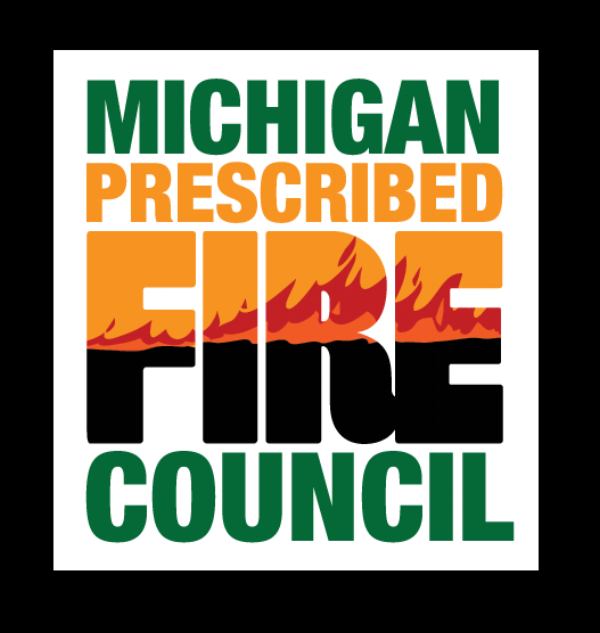On Saturday, 4 June 2022, Pierce Cedar Creek Institute collaborated with the Michigan Prescribed Fire Council (MPFC) to host a public Learn & Burn event with funding from the White Oak Initiative. Over 50 Michigan residents and families were able to watch the Pierce Cedar Creek Institute (PCCI) staff and volunteer burn crew conduct a prescribed fire on one acre of prairie near the PCCI parking lot.
Photo by Nora Duncan. Local Michigan residents observe a live prescribed fire demonstration at Pierce Cedar Creek Institute from a safe distance in a paved parking area.
In addition to the fire demonstration, representatives from the Michigan Prescribed Fire Council, Kalamazoo Nature Center, Michigan State University, BCK CISMA, Barry Conservation District, and Pierce Cedar Creek Institute were present to answer questions and share resources related to conservation programs and prescribed fire.
Michigan State University had a variety of fire gear and personal protective equipment (PPE) for participants to see and try on. The Kalamazoo Nature Center displayed one of their water tender vehicles: a RAM truck equipped with an engine-operated water pump and tank used on prescribed fires at the Kalamazoo Nature Center.
Photo by Nora Duncan. A child tries on a fire helmet and leather gloves.
Mitch Lettow with the Southwest Michigan Land Conservancy presented on the need for prescribed fire in local habitats and the issues that fire suppression creates. Andy Vander Yacht with Michigan State University followed up with an interactive activity where participants represented specific species of plants and animals and learned how these species are dependent on different ecosystems and fire.
Photo by Nora Duncan. Andy Vander Yacht (MSU) leads an interactive activity about the history of fire on landscapes.
Prior to the fire participants were asked “What are any concerns, barriers/limits for burning on your own property?” The majority of participants were interested in learning more, especially about the process and equipment needed, and safety. Several people expressed limitations of neighborhood associations, costs, and infrastructure or resource availability. The concern of carbon impacts of fire were discussed with responses from Mitch Lettow and Andy Vander Yacht who explained that prescribed fire manages fuels (thatch, leaf litter, dead wood, understory vegetation, etc.) under certain conditions that are less impacting than fossil fuel emissions or wildfires which burn hotter and faster. Additionally, prescribed fires return carbon and other nutrients to the soil and reduce the risk of wildfires occurring on that parcel by managing fuels.
Photo by Nora Duncan. Fire tenders and prescribed fire crew preparing for ignition.
The prescribed fire, led by PCCI’s Mary Parr, was conducted with a backing fire to create blackline with a wet line controlling the edge of a mowed burn break. Several MPFC members discussed the process of prescribed fire and conversed with the public viewing the fire from a safe distance. The fire wrapped up in a little over an hour. Participants were engaged throughout the event and eager to learn and gather resources for getting more involved with prescribed fire as volunteers or on their own property.
For all private landowners interested in using prescribed fire on their property, please reference the MPFC’s recommended fire consultants list. Fire can be an effective, but dangerous, tool and should be implemented by trained professionals to a pre-thought prescription (burn plan) under appropriate conditions with appropriate equipment and safety measures.

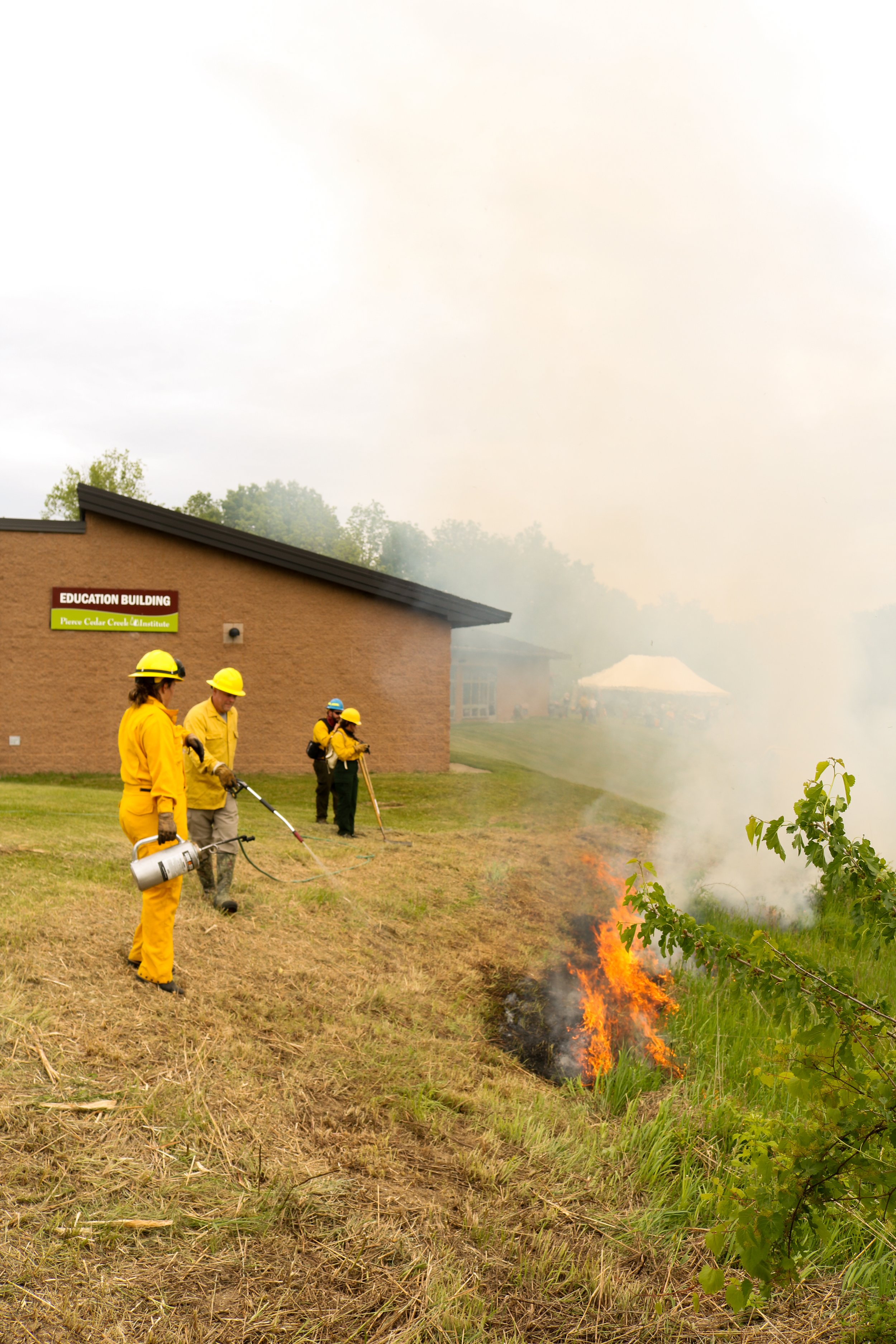
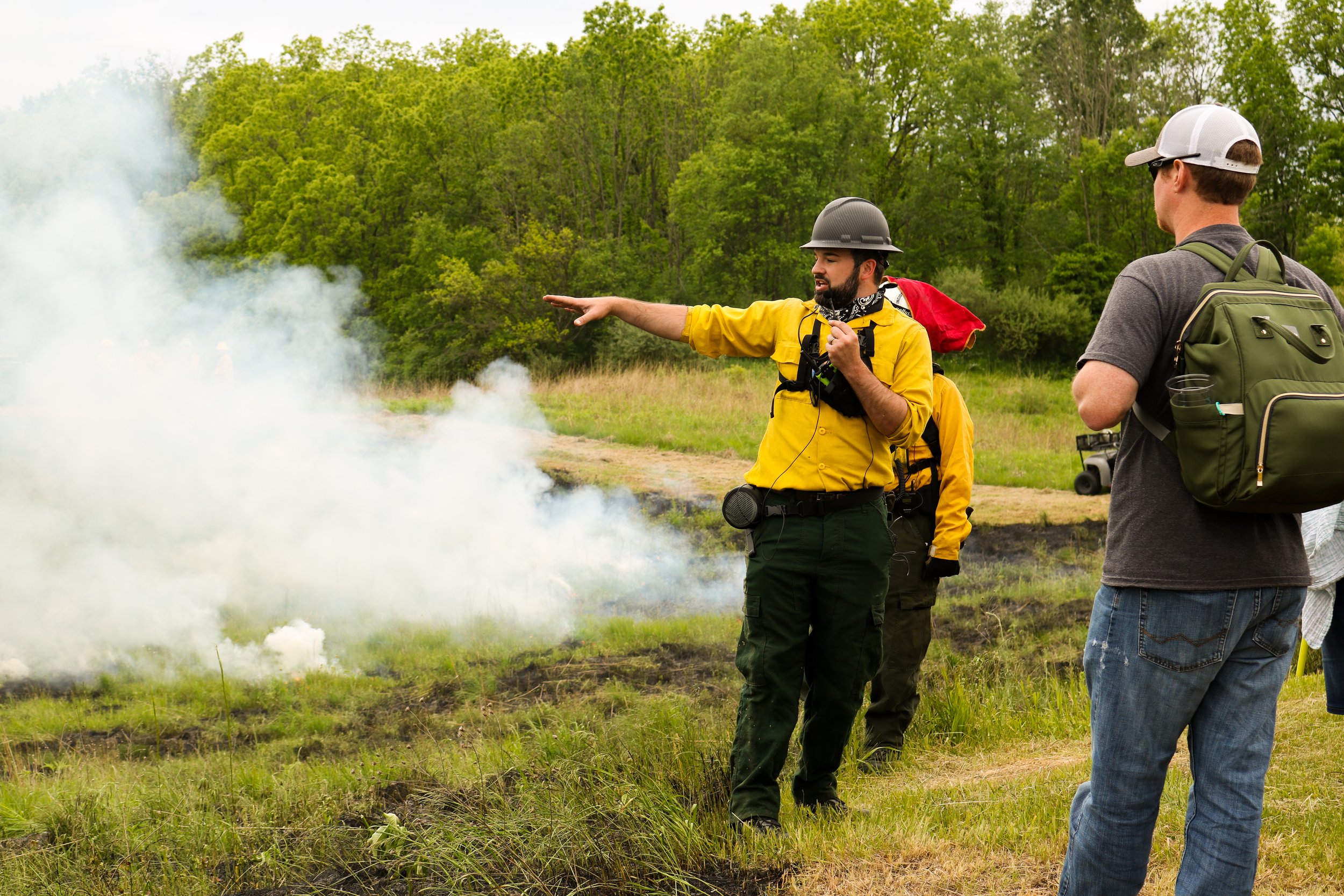
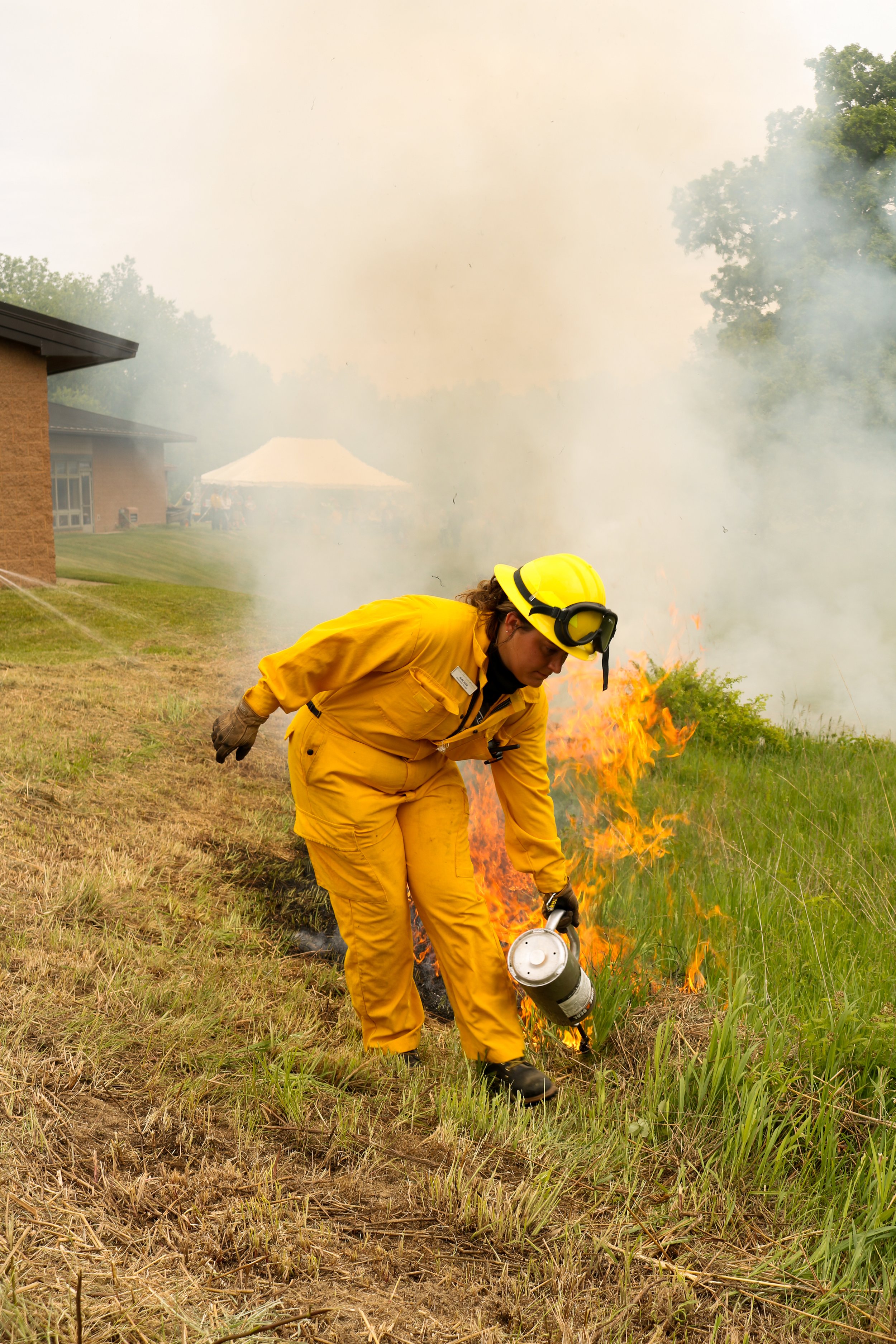
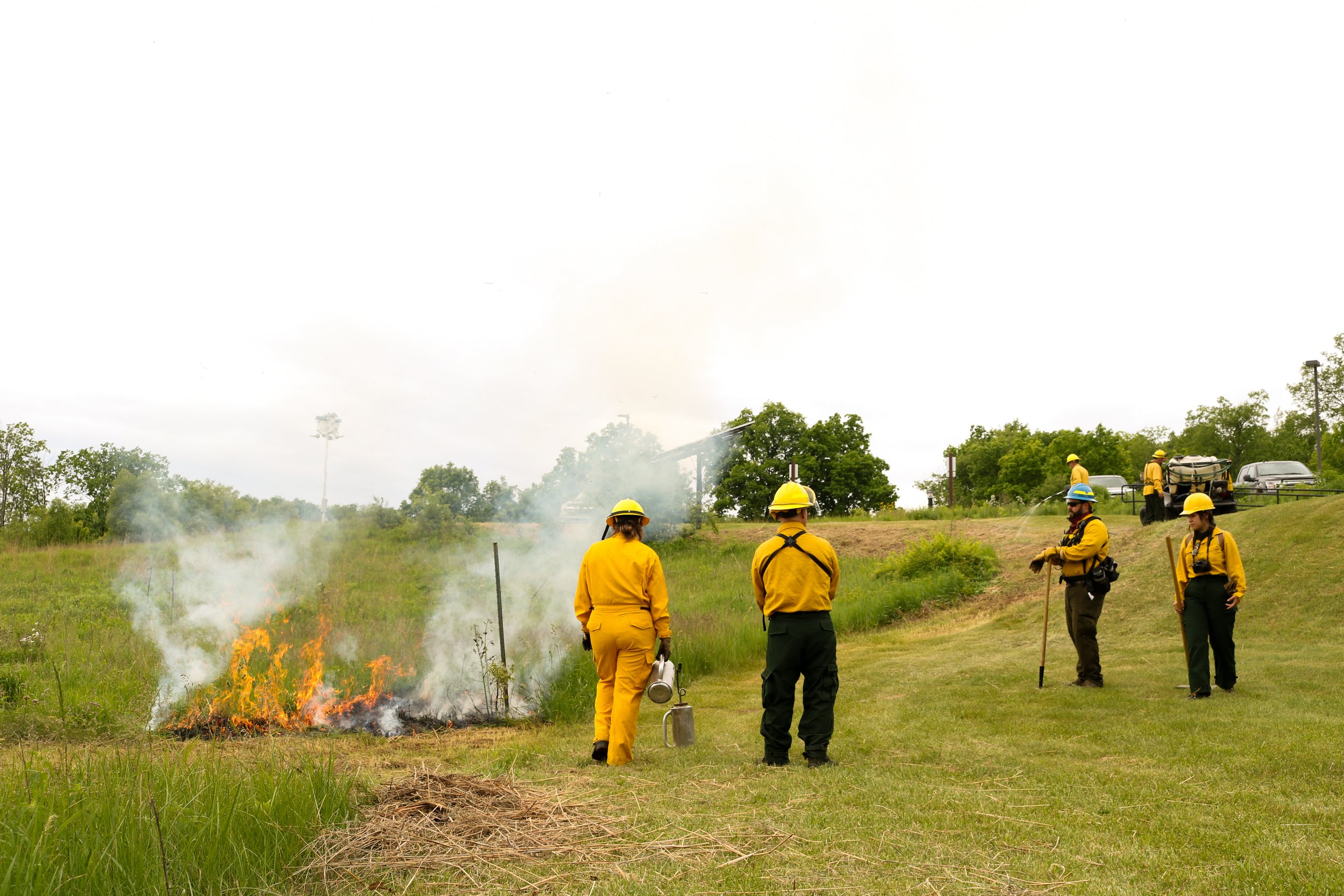
Photo of unit post-burn
Photographer, Nora Duncan, captured the event and fire. These amazing images will be used for MPFC social media outreach and advertising for future events!
The Michigan Prescribed Fire Council is one of the partners for the Michigan White Oak Initiative with the aim of educating landowners in southern Michigan about prescribed fire benefits for land management, specifically for oak forests and oak savannas. There is still funding for MPFC to educate and empower landowners to use prescribed fire on their properties, but we need the help of organizations and volunteers to make these events happen. If you are part of an organization with a crew that conducts prescribed fire and would be interested in collaborating to host a public Learn and Burn (live fire demo) or Fire Field Trip (pre/post burn), contact Stephanie Diep at info@firecouncil.org.
